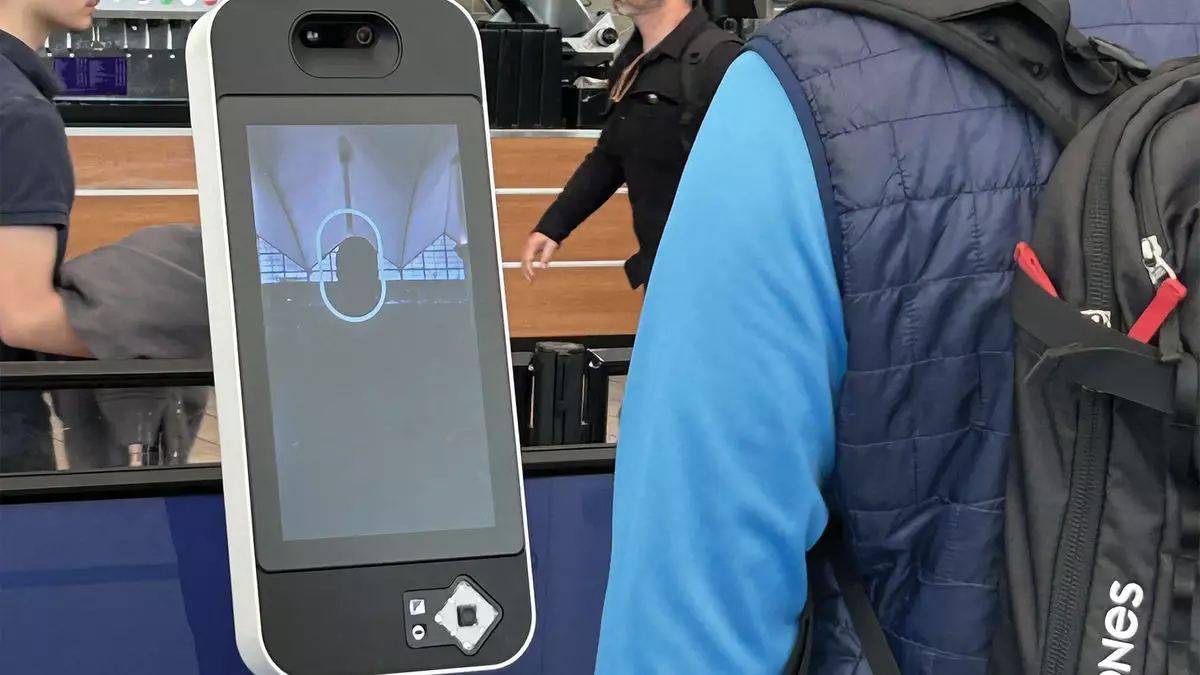As travel resumes to pre-pandemic levels, the aviation industry is grappling with the challenges of ensuring swift and secure passenger processing. Among the most promising solutions is Clear, a private security service poised to redefine airport efficiency with its innovative facial recognition technology. With the imminent deployment of its EnVe facial recognition pods by early April, the company is shifting the paradigm of how airline passengers navigate security checkpoints. Presently, 70% of Clear’s 30 million strong membership is harnessing this technology, allowing travelers to breeze through processes that once caused significant delays.
This shift signifies much more than just a technological upgrade; it’s a critical leap towards an experience tailored to the demands of a modern traveler. The facial recognition pods, deployed in 40 airports, streamline the identity verification process, cutting down wait times significantly. Where passport checks may have taken minutes, the EnVe system allows users a mere pause for their image to be matched against stored biometrics, slashing processing times from previous methods reliant on iris scans or fingerprints.
The Impact of Enhanced Customer Experience
Clear recognizes that customer experience is not just a component of its service; it is the essence of its retention strategy. According to Kyle McLaughlin, Clear’s executive vice president of aviation, the future of travel hinges on creating a frictionless journey for travelers. This philosophy is not only refreshing but essential as airports expand their technological offerings in response to increasing passenger numbers.
However, the introduction of the EnVe biometric pods comes at a pivotal time when competition is intensifying. As the TSA begins rolling out its own touchless identity solutions, travelers are presented with options, particularly for those already enrolled in TSA PreCheck. The juxtaposition of Clear and TSA’s programs could create a scenario where price sensitivity becomes more relevant, compelling Clear to emphasize its service’s unique qualities—reliability and predictability. McLaughlin argues that Clear’s established presence across 166 lanes at airports lends it an edge in creating a consistent experience across various locations.
Engaging the Premium Traveler
The evolution of airport security extends beyond efficiency; it also taps into a burgeoning market: the premium traveler. In addition to its technological innovations, Clear is rolling out a concierge service, Ambassador Assist, which addresses the needs of travelers who seek more personalized attention. Priced at $49 for assistance through the Clear lane and ranging from $99 to $149 for direct guidance to the gate, this premium service targets not only senior citizens and families with young children but also individuals seeking an elevated travel experience.
The shift towards such concierge offerings illustrates a compelling trend within the industry: the desire for personalized and luxurious travel experiences. In an age where service differentiation is paramount, Clear’s strategic move to enrich the customer journey through human interaction may serve as a significant attractor for travelers wary of technology’s increasing dominance in everyday transactions.
Challenges on the Horizon
Despite the promising advancements, Clear faces obstacles, especially in maintaining its competitive advantage. With the TSA gradually enhancing its touchless lanes, concerns arise over privacy and the practical scalability of these systems. The TSA’s slow rollout of its touchless identity system demonstrates the complexities of implementing biometric technology across various stakeholders, raising questions about the long-term feasibility of such initiatives.
While Clear currently has a head start, the landscape remains fluid. If the TSA successfully expands its offerings in touchless identity verification, it poses a substantial threat to Clear’s business model, as travelers may prefer to utilize the TSA service included with their airline tickets at no additional charge. However, Clear’s strategy, which focuses on branding itself as a premium service, could sustain its loyal customer base, as long as it continues to innovate and improve user experiences.
The Road Ahead for Clear and the Industry
As Clear’s developments signal a shift toward a more seamless travel experience, the next steps will be crucial for the company. Plans for automated entry gates, currently being piloted in specific regions, are indicative of the broader trajectory toward total automation. However, the balance between technology and personal service will remain pivotal, as passengers navigate security in an increasingly automated age.
If managed well, the interplay between Clear’s innovative solutions and the TSA’s growing capabilities could contribute to a radical transformation of airport security, moving towards an era where security not only protects but enhances the travel experience. As the industry adapts, one thing remains clear: the future of airport security is on the verge of significant changes, and companies that prioritize customer experience alongside innovation will thrive.


Leave a Reply